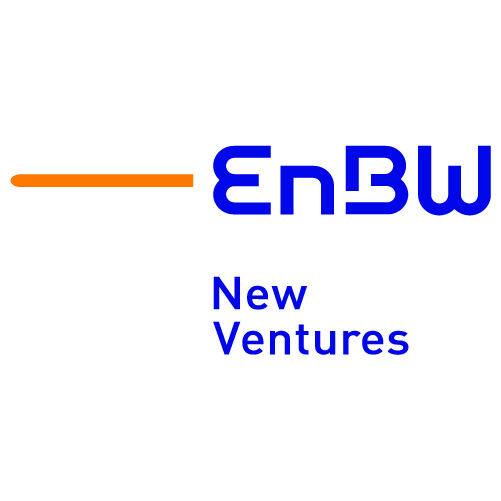Catalyzing Innovation & The Dotted Line with National Grid Partners
Interviewed by Nicolas Sauvage on July 15th, 2024
Swati Dasgupta, a powerhouse of corporate venturing and strategic innovation, has made her mark at industry giants like IBM, Siemens, and now, National Grid Partners. Her dynamic career is a testament to cutting-edge expertise and transformative leadership. In July she sat down with Corporate Venturing Insider host and TDK Ventures President Nicolas Sauvage to discuss her journey and insights from her turbulent career in the vast landscape of corporate venture capital (CVC).
From Tech to Venture: Swati’s Career Evolution
Swati’s introduction into corporate venturing began with her tenure in the world of project management and microelectronics at IBM. In the late 1990s, she joined a team researching IBM’s venture capital strategy as startups surged and Intel Capital led the way with strategic investments. Despite IBM’s decision to opt against direct equity investments, the inherent need for external innovation remained clear, which led Swati to become a member of SoftBank’s global portfolio development team.
Swati’s journey continued through the boom and bust of the early 2000s as she remained undeterred by market volatility. As time progressed, she bore witness to the dramatic rise of companies like Yahoo! Japan and Alibaba, which were then followed by the challenging downturn of the dot-com bust. It was during this period of dramatic highs and lows that she heightened her understanding of strategic value and the necessity of external innovation.
“Being part of the early days of SoftBank’s international ventures, especially during a time of market volatility, was an incredible learning experience,” she recalls. “It shaped my approach to balancing risk and opportunity in corporate venture capital.” It was in this timeframe that she laid the cornerstone for her emerging career, paving the way for her future accomplishments.
The Art of Strategic Value Capture
During her time at IBM, Swati learned the importance of strategic venture capture. Rather than focusing her attention solely on financial returns, IBM Ventures emphasized the importance of early insights, strategic alignments, and partnerships. This unique approach involved many deep dives into emerging markets, understanding value chains, and identifying strategic control points.
Swati explains, “IBM’s venture strategy was 100% about strategic value capture. It wasn’t just about financial investments; it was also about partnerships, early insights, and creating a business case for collaboration. We were constantly looking at how start-ups could complement and enhance IBM’s core capabilities.”
This visionary philosophy began to guide IBM’s venture initiatives with a focus on areas like AI, cloud computing, and pervasive computing during a time long before these sectors became industry buzzwords. “We had to anticipate where the market was heading and identify start-ups that could be pivotal in driving those future trends,” she adds. This proactive mindset was critical in positioning IBM at the forefront of technological innovation.
The Bridge Between Start-ups and Corporates
After her transition to Siemens, Swati faced the struggle of integrating external innovation into a hardware-centric company, which was seen to be moving towards software and services. Siemens’ transformation required adopting new technologies like IoT, AI, and cloud computing into industrial segments such as infrastructure, smart factories, and energy.
On the topic of strategic alignment, Swati emphasizes, “You need to know the business units’ roadmap and timing. Understand what they are willing to develop in-house versus what can be complemented by start-ups. This clarity helps in selecting the right start-ups and building strong business cases.”
At Siemens, Swati spearheaded several initiatives that brought together various technical teams from both the larger corporate and start-up worlds. “One of the most rewarding experiences was facilitating deep technical collaborations. Watching our internal teams work alongside start-ups to co-develop solutions was a testament to the power of strategic alignment,” Swati shares.
The Catalyst Effect
As a pioneer of innovation, Swati highlights the importance of being a catalyst for change within much larger organizations. “You need to see yourself as the owner of the project, evangelize the opportunities, and systematically address roadblocks. This requires building a compelling business case and gaining executive support.”
Swati recalls her experience at Siemens, where one time, she brought 15 business unit CEOs to Silicon Valley, California for a 5-day immersive experience with top VCs and start-ups. This new initiative sparked a change in mindset, bringing an emphasis on the importance of external innovation and software in Siemens’ future. “It was about creating an a-ha moment for the executives, showing them firsthand the cutting-edge technologies and the agile methodologies of start-ups,” she mentions.
Key Metrics for Success
Swati takes time to underscore that KPIs typically vary depending on the company’s specific objectives. At IBM, success metrics were measured by the number of acquisitions, partnerships, and early insights. At Siemens, the initial focus was on product development and market transfer. Now, at National Grid Partners, KPIs revolve around engagements, POCs, and deployments.
“It’s crucial to have clear, agreed-upon measurements that align with the company’s strategic goals. This ensures transparent communication and tracks progress effectively,” Swati advises. She continues by highlighting the importance of tailoring KPIs to reflect not only strategic goals but also tailoring KPIs to reflect not only strategic goals but also financial ones, thus ensuring a much more balanced approach when looking at things like value creation
On Navigating Challenges and Embracing Change
Swati continued by discussing some of the challenges related to managing the intricate, delicate balance between start-up agility and corporate structure. “One of the biggest challenges is navigating the cultural and operational differences between start-ups and large corporations. It requires patience, understanding, and a willingness to adapt,” she mentioned.
These days, Swati’s approach at National Grid Partners involves fostering a culture of continuous learning and adaptation. “We encourage our corporate partners to think like start-ups and be open to new ideas and approaches. This mindset is critical for driving innovation and staying competitive in today’s fast-paced market,” she elaborates.
Reflecting and Looking Forward
Looking back on her career so far, Swati offers a key piece of advice: “Every company and market is different. You must adjust to the culture and speed of the industry while keeping the company’s objectives in mind. This adaptability is crucial for successful corporate venturing.”
On her journey through IBM, Siemens, and National Grid Partners, Swati showcases the ever-evolving nature of corporate venturing while emphasizing innovation, strategic value, and external partnerships in driving business success. The experiences Swati has lived so far underscore the importance of clear KPIs, strategic alignment, and the ability to act as a catalyst for change within the walls of larger organizations.
Swati concludes, “The future of corporate venturing lies in the ability to seamlessly integrate start-up innovation with corporate resources, creating synergies that drive both financial and strategic growth. It’s about building bridges, fostering collaborations, and continuously adapting to the ever-changing landscape of technology and business.”

 Building a "dotted-line" team that connects the venture and core business is key to scaling startups ensuring integration, resource sharing, and agility.
Building a "dotted-line" team that connects the venture and core business is key to scaling startups ensuring integration, resource sharing, and agility. 



















